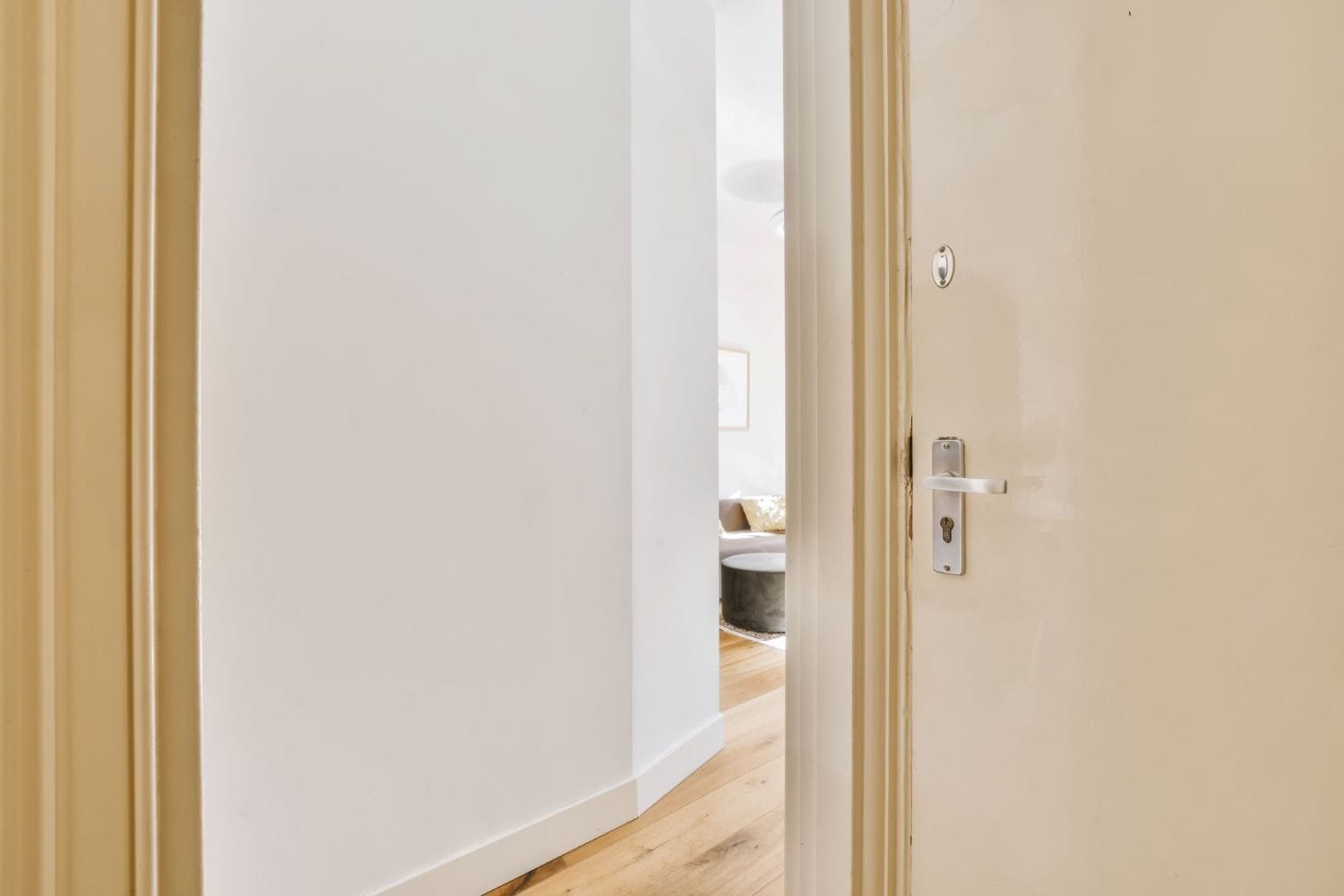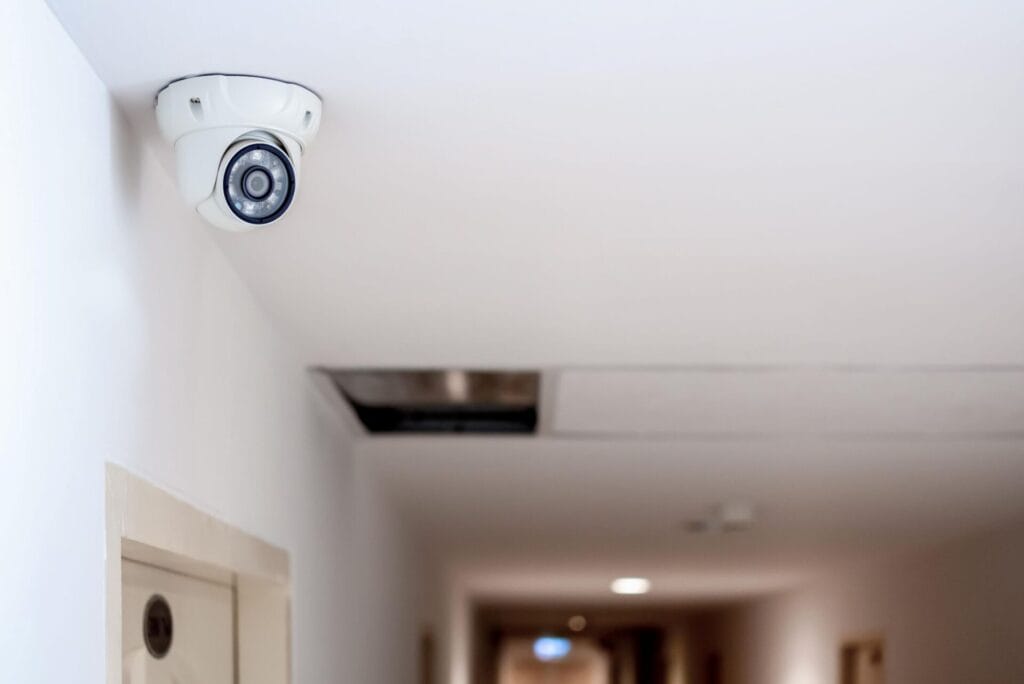Making condo communities safer without personal doorbell cameras
Date: Nov-04-2025

Doorbell cameras are small but powerful surveillance tools that enable people to see who is at their door, even if they aren’t at home.
You’ve probably heard of the Nest, Ring and Arlo, and while these personal cameras have different features, they operate the same way. Doorbell cameras are Wi-Fi-enabled hardware devices that can connect with a smartphone through an app.
Table of contents
- Condo security cameras: What are the rules?
- Boosting security without doorbell cameras: Options to consider
The owner of the doorbell camera can do things like:
- Receive alerts when someone is at their door
- Talk to people through the doorbell camera
- View footage in real time
It’s not just single-family homeowners who have been installing these user-friendly security devices. Condo owners and residents are using the cameras to add an extra layer of security to their homes.
But not every condominium will permit the installation of doorbell cameras. Find out why, and explore what your condo community can do to enhance security if these cameras are not an option.
Condo security cameras: What are the rules?
This article will address surveillance camera rules that apply to Ontario condominiums. Since rules are influenced by state/provincial and federal laws, as well as the condo’s governing documents, you should always see what surveillance limitations or requirements apply to your city before approving/denying doorbell cameras.
Cameras installed by the condo corporation
Let’s start with cameras owned by the corporation. Condo corporations can install security cameras on the common elements without getting a vote of approval from owners. That includes hallways, elevators and amenity spaces.

Condos have a right to do this because they are obligated to uphold the safety and security of the property, and keep people safe. Security cameras can help with fulfilling this duty, and studies have determined that surveillance cameras make people feel safer. That is important in a community that houses hundreds or even thousands of people.
However, before a board decides to install surveillance cameras, it needs to clearly identify the purpose of the cameras, and is encouraged to consider if there are other ways to achieve the security objectives of the corporation. Furthermore, cameras must not have a view into resident units.
In addition, a surveillance camera and privacy policy need to be available to residents. The policies should cover, at a minimum:
- The purpose of surveillance
- General location of cameras
- Types of personal information that will be captured
- Who has access to surveillance and who will review it
- How will surveillance be stored, and for how long
- The process for requests to view footage
- How residents will be advised of any changes or expansion of camera locations
- The process for responding to privacy breaches
Resident-installed cameras
Doorbell cameras have been creating issues for condo communities. While there are no laws banning condo owners from installing them on the outside of their doors, corporations do have the ability to prevent residents from using them.
For starters, in most situations, installing a doorbell camera would constitute an addition, alteration, or improvement to the common elements under Section 98 of the Condominium Act, or be otherwise governed by existing provisions in the declaration or rules.
That means residents will need to ask the board for permission to install doorbell cameras.
Don’t be surprised if your request is denied. Given the layout of condo buildings, doorbell cameras installed outside of doors could capture views inside of a neighbour’s unit. That would raise significant privacy concerns because residents are entitled to a reasonable expectation of privacy.
Different types of condo communities will have different approaches to doorbell cameras, but privacy rights cannot be sacrificed for an individual’s desire to increase security.
It’s worth mentioning that any security camera that an owner or corporation installs must only capture images and not conversations. The recording of private conversations is an offence under Section 184 of the Criminal Code of Canada when the person making the recording is not a party to the conversation.
Boosting security without doorbell cameras: Options to consider
Taking a multilayered approach to security is always best. Below are some security measures that corporations can implement to make residents feel safer, even if they are not permitted to install doorbell cameras.
Get residents involved
Maintaining a secure environment is a team effort. Residents can help do their part by being aware of security threats and taking proactive measures to minimize risks. For example, even though they want to be courteous and hold the front door open for the person behind them, they should avoid this behaviour.
Condo management should regularly communicate with residents about security procedures, best practices, and any relevant incidents that occur on the property.
Security and/or concierge
While security technology has become remarkably more sophisticated, most solutions are still unable to stop someone from acting maliciously. Conversely, trained security or concierge staff have always had success with preventing crimes from escalating.
Having trained personnel on site, or scheduling strategic patrols, is crucial to ensuring quick responses to incidents.
Maintaining a visible security presence is a reliable method for enhancing security, especially since people can effectively respond to different types of problems and tailor solutions as needed.
Improved environmental design
Creating spaces that are open, clean and well-lit can do a lot to reduce crimes of opportunity. Motion-sensor lighting can deter loiterers and save energy. Just be sure to avoid harsh spotlights that create deep shadows.
Trim large bushes, hedges, and trees near the building and entry points to remove hiding spots.
Residents who are concerned about their units can use door and window sensors to detect when they have been opened. These devices will send real-time alerts to residents’ smartphones.
Access control systems
Access control is a method of automating entry for authorized residents, staff, and visitors. While there are many different access control systems, they all share the common goal of balancing security and convenience.
Key cards and key fobs
Key card and key fob systems for apartments were among the first to replace the traditional key.
At the building entrance, residents hold up their fob or card to the access reader, which scans the credentials and unlocks the door if the fob is valid. Most fob entry systems use RFID technology to scan credentials.
Cloud-based access control
Residents and staff can open doors for themselves, or guests, using any device that has internet connection. Doors can be opened remotely. Access permissions can be customized remotely, too.
Mobile access control
Mobile access control systems enable residents to use smartphones or tablets as access credentials.
Mobile access control systems may fall under cloud-based access control, but they can also operate using Bluetooth low energy or near-field communication.
Intercom systems with door release
When visitors come to the property, they look up a resident in the intercom’s directory and press the corresponding buttons to call them. The resident answers the call and presses a specific button to activate the door release. These systems are commonly seen in older condo or apartment buildings.
Keypads
Keypad access control systems are commonly used to manage access to rooms such as amenity spaces like gyms and rooftops. Unlike key card or fob systems, residents don’t need to carry a physical device to use keypads.
Some condos that have guest rooms will use keypad systems and fobs so that short-term guests can still access amenity spaces using a unique code and the keypad.
Conclusion
While doorbell cameras are convenient and affordable security tools, they may create significant privacy issues for condo communities.
If they cannot be installed without infringing on someone else’s privacy, then implementing a robust, multilayered security approach should create a happy balance between individual security needs and privacy considerations.
